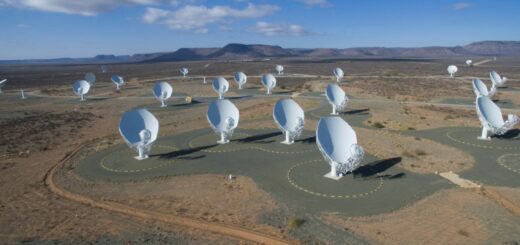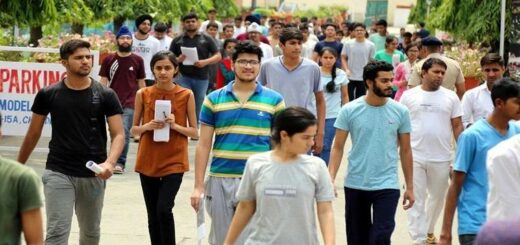Current Affairs UPSC/IAS Exams – 5th June 2019
India Meteorological Department
Topic: Science and Technology
In News: Renowned scientist Mrutyunjay Mohapatra was appointed as the chief of the India Meteorological Department (IMD).
More on the Topic
- The India Meteorological Department (IMD) is an agency of the Ministry of Earth Sciences of the Government of India.
- It is the principal agency responsible for meteorological observations, weather forecasting and seismology.
- IMD is headquartered in Delhi and operates hundreds of observation stations across India and Antarctica.
- IMD is also one of the six Regional Specialised Meteorological Centres of the World Meteorological Organization.
- It has the responsibility for forecasting, naming and distribution of warnings for tropical cyclones in the Northern Indian Ocean region, including the Malacca Straits, the Bay of Bengal, the Arabian Sea and the Persian Gulf.
- IMD operates a network of hundreds of surface and glacial observatories, Upper Air (high altitude) stations, ozone and radiation observatories and meteorological radar station
- Additional data is received from India’s constellation of satellites, such as Kalpana-1, Megha-Tropiques and instruments on board the IRS series and the INSAT series of satellites.
- Data and observations are also reported into the IMD network from meteorological instruments on board Indian merchant marine and Indian Navy ships.
- IMD was the first organisation in India to deploy a message switching computer for supporting its global data exchange.
- IMD collaborates with other agencies such as the Indian Institute of Tropical Meteorology, National Centre for Medium Range Weather Forecasting and the National Institute of Ocean Technology.
- IMD also operates seismic monitoring centres at key locations for earthquake monitoring and measurements.
Source: The Hindu
Prime Minister’s Scholarship Scheme under NDF
Topic: Government Schemes
In News: Prime Minister sanctioned an increase in the money awarded under scholarships for the children of the armed forces, paramilitary forces and the railway protection forces killed in the line of duty.
More on the Topic:
- The scholarships are awarded under the National Defence Fund, set up in 1962 to take charge of the voluntary donations in cash and kind received for promotion of the national defence effort.
- The scheme was also been extended to the wards of state police personnel killed in terrorist and Maoist violence.
- Every year new scholarships are given to 5,500 wards of armed forces, 2,000 wards of paramilitary forces controlled by home ministry and 150 wards of forces controlled by railways ministry.
About National Defence Fund:
- National Defence Fund (NDF) is an Indian Government Institution, set up in the year 1962 to receive voluntary donations for the promotion and welfare of the members of the Indian Armed Forces (including paramilitary forces) and their dependents.
- Members of the executive committee include the Prime Minister of India—as chairperson, Home Minister, Defence Minister and Finance Minister—Treasurer.
- Donations to the National Defence Fund are 100% tax exempt.Donations can be made through an online government portal also.
Source: The Hindu
Digital payments: Nilekani panel
Topic: Economy
In News: The Nandan Nilekani-led committee on deepening of digital payments advised that The Reserve Bank of India (RBI) and the government must target growth in the volume of digital payments by a factor of 10 in three years, leading to doubling in value relative to gross domestic product (GDP).
More on the topic:
- The RBI constituted the five-member committee in January to review the status of digitization of payments, identify gaps in the ecosystem, and suggest ways of plugging them.
- It was tasked to suggest a medium-term strategy for deepening digital payments and measures to strengthen safety and security.
Key recommendation of the panel:
- The Nilekani committee also highlighted the need to expand the acceptance infrastructure across the country and also to reduce the interchange on card payments by 15 basis points.
- The panel has also pushed for removal of all charges on digital payment transactions for the convenience of customers.
- The committee has also made recommendations to the National Payment Council of India to allow digital payments systems such as RuPay and BHIM UPI in other countries to facilitate easy remittance to India.
- It highlighted the need to provide citizens with the option to pay digitally for all payments to government and public sector agencies.
- For instance, in GSTN all card payments should also be enabled at the earliest, besides other electronic payment options.
- As electronic receipts will result in significant savings to the government by way of faster collection of funds, the government must lead by example, and pay for these services without passing them to the consumers in the form of convenience fees.
- The government should continue the current scheme to refund the merchant discount rate for small value transactions (under ₹2,000) beyond December 2019 for another two years.
- The panel also recommended the creation of a No-KYC wallet with a maximum value of ₹2,000 in the wallet and maximum spending capped at ₹10,000 per month, with the aim of boosting digital payments.
Source: The Hindu
Continuous Ambient Air Quality Monitoring System (CAAQMS)
Topic: Environment and Ecology
In News: As part of its countrywide ‘Go Green’ initiative, the Army commissioned a “Continuous Ambient Air Quality Monitoring System (CAAQMS)” at Fort William Military Station.
More on the Topic:
- The CAAQMS at the Eastern Command headquarter will measure air pollution, including particulate matter throughout the year.
- In addition, it also displays wind speed, direction, ambient temperature, relative humidity, solar radiation, barometric pressure and rain gauge.
- The data can be remotely monitored on internet and collated into various desired formats.
- It can also be used by the West Bengal Pollution Control Board or any other local or international weather monitoring bodies.
Source: The Hindu
World No Tobacco Day
Topic: Health Related Issues
In News: PIB observed World No Tobacco Day on 31st May.
More on the Topic:
- Tobacco causes 1 death every 8 seconds in India and 5,000 children begin consuming tobacco every day.
- Unlike in earlier days, adolescent girls have started smoking, which is a very bad sign. Various reasons like learning from role models, peer pressure, stress, desire for mood elevation, curiosity, urge to appear sophisticated and need for relaxation after hard work result in people taking up tobacco consumption.
- Over 14% children use some form of tobacco and over 34% of children are unaware of its harmful effects.
- Tobacco contains 4,000 harmful chemicals, some of which are Nicotine, Ammonia, Cadmium, Stearic acid, Methanol, Carbon monoxide, Butane.
- Due to tobacco use, various life-threatening illnesses occur. The main diseases among them are Plaque in coronary Artery, Heart disease, Smoker’s cough-inflamed bronchial tube, Dental problems, Damage of gums, Staining of teeth, Premature attrition and losing of teeth, Cancers of mouth, lip cancer and cheek cancer.
Legislation to curb Tobacco usage:
- The Cigarettes and Other Tobacco Products (Prohibition of Advertisement and Regulation of Trade and Commerce, Production, Supply and Distribution) Act, 2003 or COTPA, was passed in 2003 and came into force from 2008.
- However, tobacco use cannot be completely curbed with legislative measures alone; awareness and conscious efforts by society and users are necessary to remove the vicious grip of tobacco over society.
About MPOWER Programme:
- WHO’s Tobacco Free Initiative focuses on helping countries, particularly those with low or middle incomes, to develop, implement and enforce the most effective tobacco control policies and programmes.
- To assist in country-level implementation of the WHO FCTC, WHO has introduced the MPOWER package of technical measures and resources, each of which reflects one or more of the demand reduction provisions of the WHO FCTC.
- MPOWER has been developed to help countries build their capacity to implement these provision
- The successful implementation of these measures will ultimately play a key role in reducing the cancer burden in these countries.
Source: The Hindu
Siachen Glacier
Topic: Geography
In News: New defence minister has visited Siachen Glacier recently.
More on the Topic:
- Siachen Glacier is among of the largest glaciers in the non-polar region of the world.It lies in the Karakoram Range system which is a part of western Himalayas.
- It also lies to the south of the zone that separates Eurasion Plate with the Indian Plate, which is the result of convergence boundary interaction in geographical terms.
- It is the highest battle field in the world and lies on LoC (Line of Control) between India and Pakistan. It has been continuously contested by Pakistan as its own part which has led to militarisation of the glacier.
- After the Indo-Pakistan war in 1971, an agreement was signed between the two countries in 1972, which came to be known as the Shimla Agreement, but it failed to clearly mention who controls the glacier.
- However, in 1984, the Pakistan army tried to enter the glacier, forcing India to launch a military operation known as “Operation Meghdoot” and since then we have control over the glacier. Frequent skirmishes did occur between 1884 to 2003. A ceasefire agreement was signed between India and Pakistan in 2003
- The glacier is the source of many rivers including Nubra River, a tributary of Shyok, which is a part of the Indus River System.
- Siachen Glacier also boasts of the world’s highest helipad built by India at Point Sonam, to supply its troops. India also installed the world’s highest telephone booth on the glacier.
Source: The Hindu



















